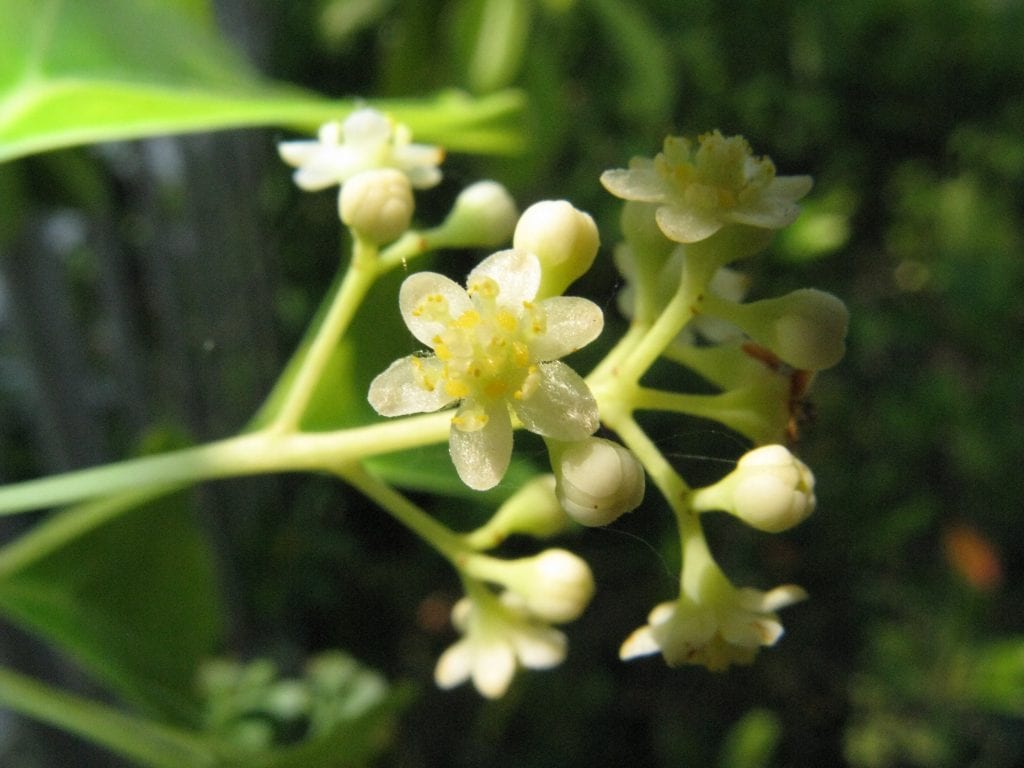
The camphor tree is a beautiful tree that is easy to care for and is very long-lived. Its crown is so wide that it provides excellent shade, so during the summer you can have picnics without having to worry about the sun.
So if you have a large piece of land and you are looking for a beautiful plant, Next I will tell you everything you need to know about the camphor tree.
Origin and characteristics
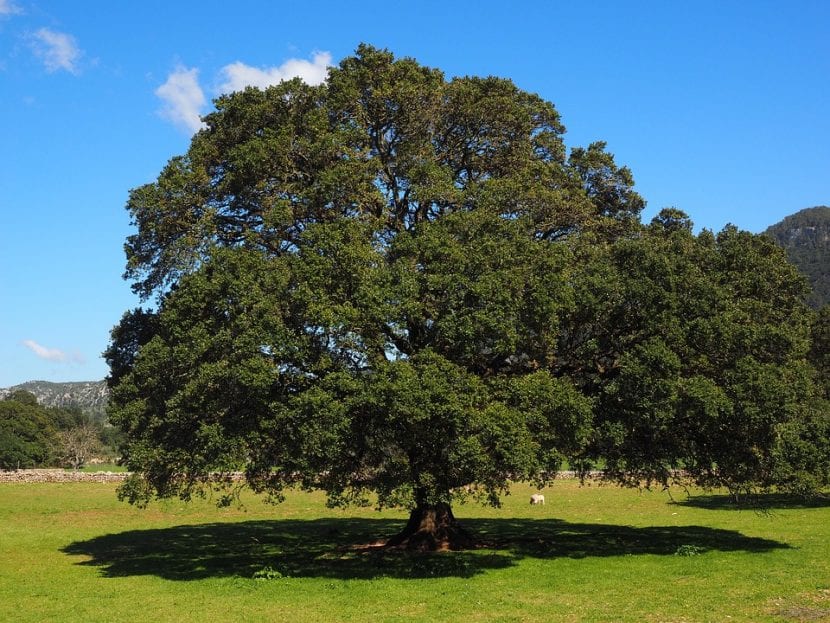
Our protagonist it is an evergreen tree -is always green- originating in China, Japan and Taiwan. It is also easy to find in warm areas, such as the Pacific coastal regions of the United States. Its scientific name is Cinnamom camphora, although it is better known as camphor tree.
Reaches a height of 20 meters, with a wide crown of up to 6-7m. The leaves are alternate, petiolate, oval in shape, leathery, and bright green in color. The flowers are yellowish-white in color and appear in late spring / early summer grouped in corymbose panicles. The fruit is a reddish berry that turns black when ripe.
What are their cares?
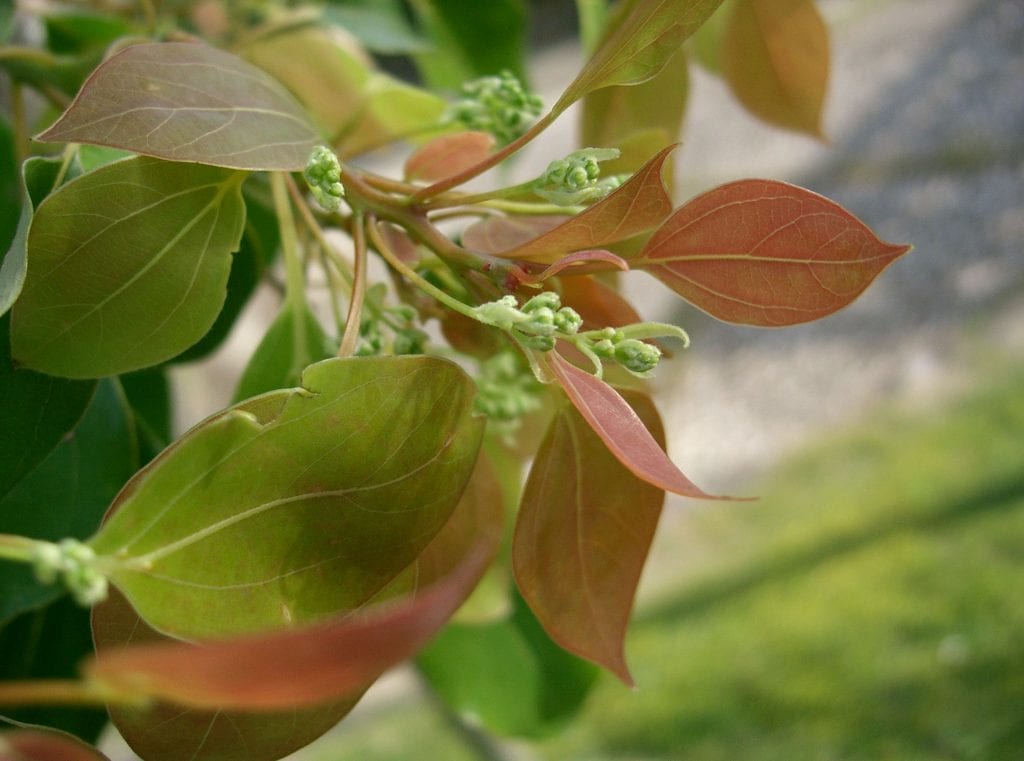
If you want to have a copy, we recommend that you provide it with the following care:
Location
Place your camphor outdoors, in full sun or semi-shade. Due to its dimensions, it is important that it is at a distance of 8 meters from any construction, pipes, etc.
Irrigation
It has to be watered 3 or 4 times a week in summer, and every 4-5 days the rest of the year.
Subscriber
From early spring to late summer / early fall with organic fertilizers, such as guano, compost, or the manure, once a month.
Planting time
The camphor tree it is a tree that must be planted in its final location in early spring. You have to be very careful not to manipulate your roots too much since otherwise it will be difficult for you to overcome the transplant.
Multiplication
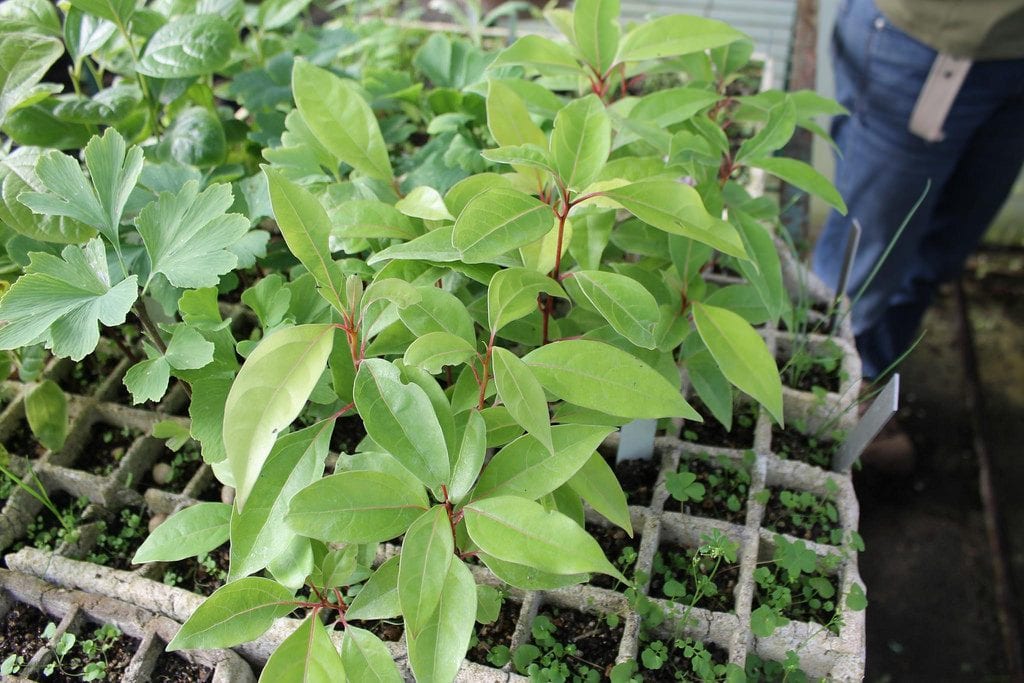
It multiplies by seeds and by semi-woody cuttings in spring. Let us know how to proceed in each case:
Seeds
You have to follow this step by step:
- First, a seedling tray is filled (for sale here) with universal growing medium (you can get it here).
- Second, it is watered so that the substrate is well soaked.
- Third, a maximum of two seeds are placed in each socket, and covered with a thin layer of substrate.
- Fourth, it is watered again, this time with a sprayer.
- Fifth, the tray is inserted into another without holes. Each time you water, this last tray will fill almost to the top.
- Finally, it is placed outside, in semi-shade.
Thus, keeping the substrate always moist, the seeds will germinate in about a month. It can be moved to the final location as soon as roots grow out of the hole in the seedling tray.
Semi-woody cuttings
You have to follow this step by step:
- First, a branch of about 40cm has to be cut, using a saw previously disinfected with pharmacy alcohol.
- Second, the base is impregnated with powdered rooting hormones or with homemade rooting agents.
- Third, a pot is filled with universal growing medium.
- Fourth, a hole is made in the center, about 10cm.
- Fifth, the cutting is introduced into that hole, and it is filled with substrate.
- Sixth, it is watered.
- Seventh, it is placed outside, in semi-shade.
Thus, will root in 1-2 months, but I insist, until the roots come out through the drainage holes of the pot, it will not be advisable to transplant it.
Rusticity
Withstands cold and frost up to -12ºC, but vegetates best in warm areas.
Can it be grown in a pot?
The answer is… No.. It is a very large tree, which over time, unless something is done to prevent it, will "ask" us to plant it in the ground. That added to the fact that it does not tolerate transplants too well, makes it difficult to keep it in a pot.
But I'm also going to tell you something: I myself have trees that I shouldn't have in a container (Aesculus castanum, for example, or Fagus sylvatica), and they're fine ... for now. So good, If you would like to try it, I recommend taking care of it in the following way:
- Location: outside, in semi-shade or in full sun.
- Substratum: universal cultivation.
- Irrigation: 3 times a week in summer, less the rest of the year.
- Pruning: at the end of winter, removing the dry, diseased or weak branches, and cutting those that are growing too much. Ideally, keep it with a maximum height of 2-3 meters.
- Transplant: every 2 or 3 years, in early spring.
What uses does it have?
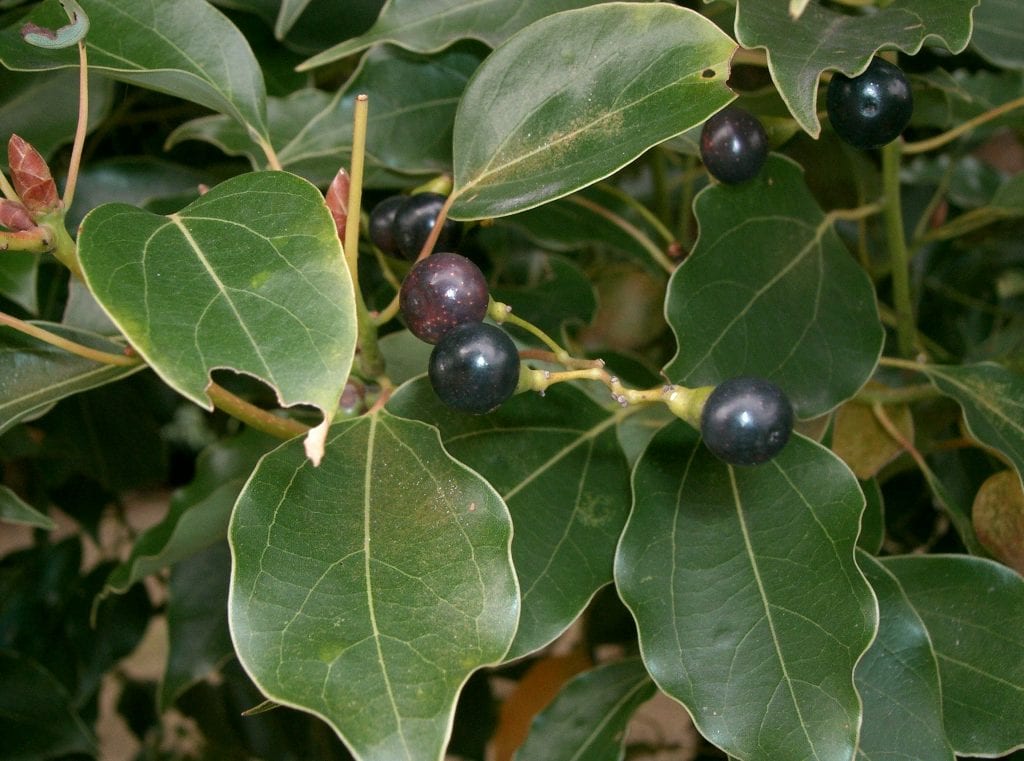
Ornamental
It is a very decorative tree, ideal for gardens. You can have it like isolated specimen, forming screens, or as windbreaker.
Wood
Polished wood It is used to make furniture, interior finishes and in joinery.
Medicinal
From the distillation of wood and leaves, camphor is obtained, which it is used as an antiseptic and antirheumatic.
What did you think of the camphor tree?
Thanks for the information and we should know well the medicinal use of this plant and its form of application.
We're glad you liked it, Franklin.
I have a camphor tree from last year and I notice the branches a little drooping, especially the lower ones. It is still small. Will I have to prune those branches?
Hi Aurora.
Yes, you can cut them, but only if they are dry. To be sure, scratch the bark a little with a knife, and see if it is green or green / yellowish. If it is, don't cut anything yet.
Anyway, how do you take care of it? It may be that you are missing a subscription if you have never subscribed before. You already tell us 🙂.
Greetings.
I have a very big buckwheat. I'm going to prune it quite a bit in late winter. Now is it necessary to seal the courts so that no plague enters it?
Hello Martin.
The camphor tree does not need much pruning, just to keep its shape. Now it can be great for a garden, so in those circumstances sometimes there is no choice. But avoid drastic pruning; that is, it is not good to leave it at half its current height in one go, as it may not survive.
The best thing to do is to reduce the length of its branches little by little, year after year.
Regarding your doubt, yes, you have to seal the wounds, especially if they are thick branches.
Greetings.
Hello, I am in Argentina and I wanted to know if I can still prune the camphor, I need to reduce the size so that it does not shade me in the pool. As I read if I reduce it 1/4 it would be fine. I would appreciate your help, thank you
Hello Marcela.
Yeah, well, it doesn't really need pruning, but you can prune it a bit. Anyway, if you can send us a photo to our Facebook and we can help you better.
Greetings.
Hello, I transplanted one at the beginning of spring, but I do not see that it is turning on, it is more I think it is drying, what can I do, thank you!
Hello Jorge.
When planting a tree it is important to be careful with its roots, since if they are manipulated a lot later, it may cost more to start.
It is also important that it does not water too much, so with 3 weekly waterings in summer and a few less in winter should be enough. Likewise, it is advisable to take advantage of some of these irrigations (for example, one every 15 days) to add biostimulants (like this one that they sell here). If you prefer, compost, mulch, egg and / or banana shells will also do the trick.
See if it improves. Greetings!
is it an invasive species?
Do you have to be careful to avoid damaging biodiversity?
Hello Anna.
No, it is not invasive 🙂
regards
Hello! I have one in a large pot in full sun, it was fine for years, but a long time ago some branches have turned almost black (dry, they had to be cut), and it has many leaves with holes and/or black and dry parts.
What can I have, and what can I do?
THANKS!
Hello Fernando.
If it has holes, it probably has some pest, caterpillars or larvae. Inspect its leaves well, on both sides, to see if you see anything.
If it didn't have anything, it could be that those insects come out at night, so just in case I recommend applying a universal insecticide.
A greeting.